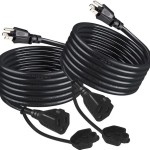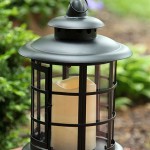Are Outdoor Wood Furnaces Worth the Money?
Outdoor wood furnaces, also known as wood-fired boilers, have gained popularity in recent years as a cost-effective and environmentally friendly heating option. They are particularly attractive to homeowners seeking to reduce their reliance on fossil fuels and lower their heating bills. While they offer advantages like energy independence and potential cost savings, it's crucial to weigh the pros and cons before investing in an outdoor wood furnace. This article will explore the key factors to consider when deciding if an outdoor wood furnace is a worthwhile investment.
Cost Savings and Energy Independence
One of the main draws of outdoor wood furnaces is their potential for significant cost savings. By utilizing readily available and often inexpensive wood fuel, homeowners can reduce their dependence on expensive heating oil, propane, or natural gas. The cost of wood varies depending on location and availability, but it generally remains lower than other heating fuels. This enables users to enjoy lower heating bills, particularly in areas with abundant access to wood. Furthermore, outdoor wood furnaces offer a degree of energy independence, allowing homeowners to rely less on fluctuating energy markets and external fuel sources.
Environmental Considerations
Outdoor wood furnaces can contribute to a more environmentally conscious heating solution. Burning wood is considered carbon neutral, as the trees used for fuel absorb carbon dioxide during their growth, which is then released back into the atmosphere when the wood is burned. However, the environmental impact of wood burning can be influenced by factors like the type of wood used and the efficiency of the furnace. Properly maintained and efficient furnaces can minimize emissions and ash production, while using seasoned hardwood can further reduce the environmental footprint. It's important to note that wood burning can generate particulate matter and other air pollutants, so choosing a furnace with a high efficiency rating and adhering to local regulations is crucial.
Installation and Maintenance Requirements
Installing an outdoor wood furnace requires significant investment and careful planning. The installation process involves choosing the right location, preparing the foundation, and connecting the furnace to the existing heating system. It's best to consult with qualified professionals for installation and ensure the furnace meets local building codes. Once installed, outdoor wood furnaces require regular maintenance, including cleaning the firebox, ash removal, and inspecting the furnace components. The frequency of maintenance depends on usage patterns and the type of furnace but can be a time commitment and may require specialized knowledge or assistance.
Space and Aesthetics
Outdoor wood furnaces require a dedicated space in the yard for installation. This space should be a safe distance from flammable structures and should be easily accessible for fuel loading and maintenance. The size and design of the furnace can also impact the overall aesthetics of the property. While some furnaces may blend seamlessly with their surroundings, others may be more prominent and require landscaping or screening to minimize their visual impact. It's important to consider the size and design of the furnace in relation to the surrounding environment and personal preferences.
Potential Drawbacks
While outdoor wood furnaces offer advantages, they also have certain drawbacks. One key consideration is the labor involved in maintaining a consistent heat supply. Users need to manually load wood into the furnace on a regular basis, which can be inconvenient and time-consuming. Additionally, outdoor wood furnaces can be susceptible to weather conditions, requiring extra attention during extreme temperatures or precipitation. Furthermore, the potential for smoke and ash emissions can be a concern for neighbors and local air quality, highlighting the importance of proper maintenance and operation.
Conclusion
Whether or not an outdoor wood furnace is worth the money depends on individual circumstances, priorities, and local conditions. Factors such as fuel availability, heating needs, budget, and environmental considerations should be carefully evaluated. While the initial investment can be significant, the potential for long-term cost savings and energy independence can make them a worthwhile investment for those seeking a reliable and environmentally conscious heating solution.

Best Outdoor Wood Furnace Central Boiler

Outdoor Wood Furnace Pros And Cons Is It Right For You

Outdoor Wood Furnace S In 2024

Outdoor Wood Burning Furnace Boilers From Madison Wi To E Iowa

Strawbale Farms Blog Outdoor Boilers Solar Electric Wi Mn

Outdoor Wood Boiler Vs Furnace

Wood Boilers Save Money But Irk Neighbors

2024 Outdoor Wood Furnace Boiler S Homeguide

Best Outdoor Wood Furnaces 2024 Forestry Reviews

What Is An Outdoor Forced Air Wood Furnace







